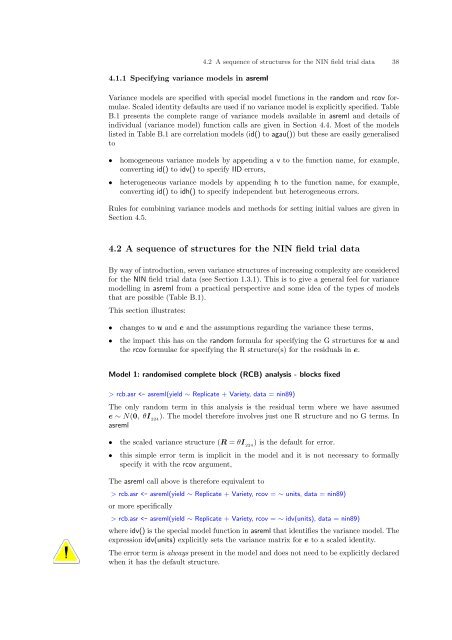ASReml-S reference manual - VSN International
ASReml-S reference manual - VSN International
ASReml-S reference manual - VSN International
- No tags were found...
Create successful ePaper yourself
Turn your PDF publications into a flip-book with our unique Google optimized e-Paper software.
4.1.1 Specifying variance models in asreml4.2 A sequence of structures for the NIN field trial data 38Variance models are specified with special model functions in the random and rcov formulae.Scaled identity defaults are used if no variance model is explicitly specified. TableB.1 presents the complete range of variance models available in asreml and details ofindividual (variance model) function calls are given in Section 4.4. Most of the modelslisted in Table B.1 are correlation models (id() to agau()) but these are easily generalisedto• homogeneous variance models by appending a v to the function name, for example,converting id() to idv() to specify IID errors,• heterogeneous variance models by appending h to the function name, for example,converting id() to idh() to specify independent but heterogeneous errors.Rules for combining variance models and methods for setting initial values are given inSection 4.5.4.2 A sequence of structures for the NIN field trial dataBy way of introduction, seven variance structures of increasing complexity are consideredfor the NIN field trial data (see Section 1.3.1). This is to give a general feel for variancemodelling in asreml from a practical perspective and some idea of the types of modelsthat are possible (Table B.1).This section illustrates:• changes to u and e and the assumptions regarding the variance these terms,• the impact this has on the random formula for specifying the G structures for u andthe rcov formulae for specifying the R structure(s) for the residuals in e.Model 1: randomised complete block (RCB) analysis - blocks fixed> rcb.asr rcb.asr rcb.asr
















